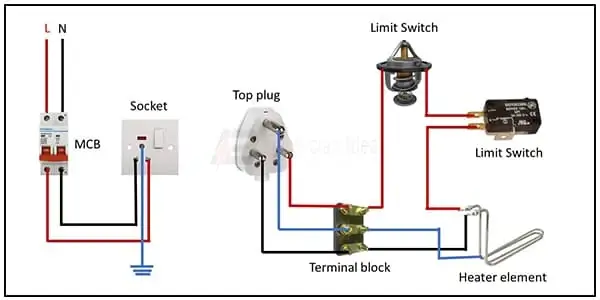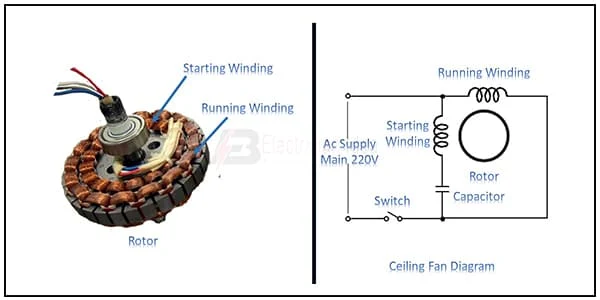Connect Capacitor with Ceiling Fan
This Diagram shows Connect a Capacitor with a Ceiling Fan. In this diagram, we simply connect how to wire a capacitor with a ceiling fan. A capacitor simply makes good power input in a ceiling fan. We know a ceiling fan needs starting capacitor for starting power. Because ceiling fans need high starting power for running. For this reason, we need to connect a capacitor. In this diagram, we describe how to simply connect a capacitor with a fan.
Diagram of Connect Capacitor with Ceiling Fan wiring
Components Need for this Project:
You can get the components from any of the sites below:
$ads={1}
Read Also:
Components used to make the Capacitor with Ceiling Fan:
01. Ceiling Fan
 |
| Fig 2: Ceiling Fan |
02. Capacitor
 |
| Fig 3: Capacitor |
Thank You for visiting the website. Keep visiting for more Updates.
Frequently Asked Questions
Whether you are connected to the battery, amp, or a distribution block of some kind you need to connect the positive terminal of the capacitor to the positive terminal of the other component by running a wire them.
So it depends on the capacitor type. If it is a capacitor that can't handle the voltage or current flow, or the supply can't handle the current, something may get damaged. If the cap is at a different voltage, it will be a short circuit diagram when connected, and when it reaches the supply voltage it will be an open circuit diagram.
You attach a battery, that at first adds a single electron to one side of the capacitor. The electron has an electric field that repels other electrons, or this field reaches through space and pushes on the electrons in the other plate, causing that plate to acquire an induced positive charge.
Most tantalum of the capacitors are sensitive to the polarity of the applied voltage. Incorrect installation and/or improper circuit diagram application that subjects the capacitors to reverse bias may lead to performance degradation and catastrophic failure (short circuit) of the capacitor.
If the wrong run of the capacitor is installed, the motor will not have an even magnetic field. This would cause the rotor to hesitate at those spots that are uneven. This hesitation will cause the motor to become noisy, increase energy consumption, cause performance to drop, or cause the motor to overheat.
You may like these posts

These days we can not stay any time without electricity.

First of all, connect the (N) terminal (Neutral terminal)

The oil medium is heated to a temperature of about 400°

In this diagram, we use five 2 way switches, five lights,

lf you want to make this circuit easily check our diagram

A regulator is a good electric device that controls a


Post a Comment
Do leave your comments